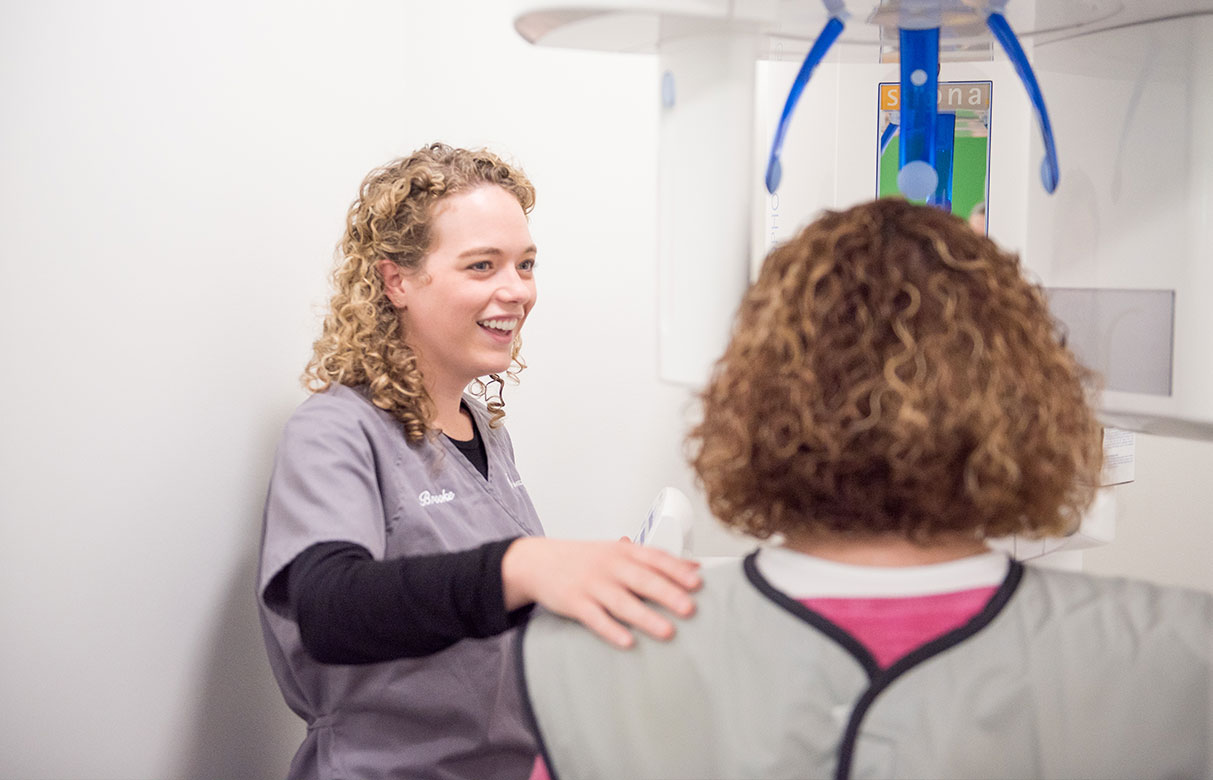Digital X-Rays
 Dental x-rays capture images of teeth and other areas of the mouth that can not be seen using other methods of examination. In addition to a detailed visual exam, digital x-rays are the most common diagnostic tool in the dental office. X-rays show the difference between hard and soft tissue and can reveal various issues inside the mouth, such as bone loss, cracks in teeth, tooth decay, gum disease, or infection.
Dental x-rays capture images of teeth and other areas of the mouth that can not be seen using other methods of examination. In addition to a detailed visual exam, digital x-rays are the most common diagnostic tool in the dental office. X-rays show the difference between hard and soft tissue and can reveal various issues inside the mouth, such as bone loss, cracks in teeth, tooth decay, gum disease, or infection.
Why Digital X-Rays?
At Smile Hilliard, we make it as easy as possible to care for our patients. That’s why we have the latest technology in this area: digital x-rays.
Once taken, digital x-ray images are available instantly on our monitors and are stored electronically within your records. The film used in traditional x-rays must be developed in a dark room before it can be viewed, which takes extra time, involves environmentally unfriendly chemicals, and provides lower quality images. Digital x-rays provide much clearer images, which allows Dr. Sanyk to better detect dental problems. This leads to more proactive and conservative oral health care. In addition, digital x-rays emit up to 90% less radiation than traditional x-rays.
Types of Digital X-Rays
Intraoral x-rays are the most common type of x-ray, which are achieved by placing the sensor inside of the mouth. It provides a high level of detail, so Dr. Sanyk can use these to:
- Locate cavities
- Examine roots and bony areas of teeth
- Look at the overall health of teeth
On the other hand, extraoral x-rays are images taken outside of the mouth. A panoramic digital x-ray is used to examine teeth, but also gives a bigger picture of your overall facial structures. Dr. Sanyk utilizes extraoral x-rays to closely examine the following:
- Impacted Teeth
- Growth and development
- Facial bones
- Teeth and jaw connection
- Existence of cysts, tumors, and oral cancer





